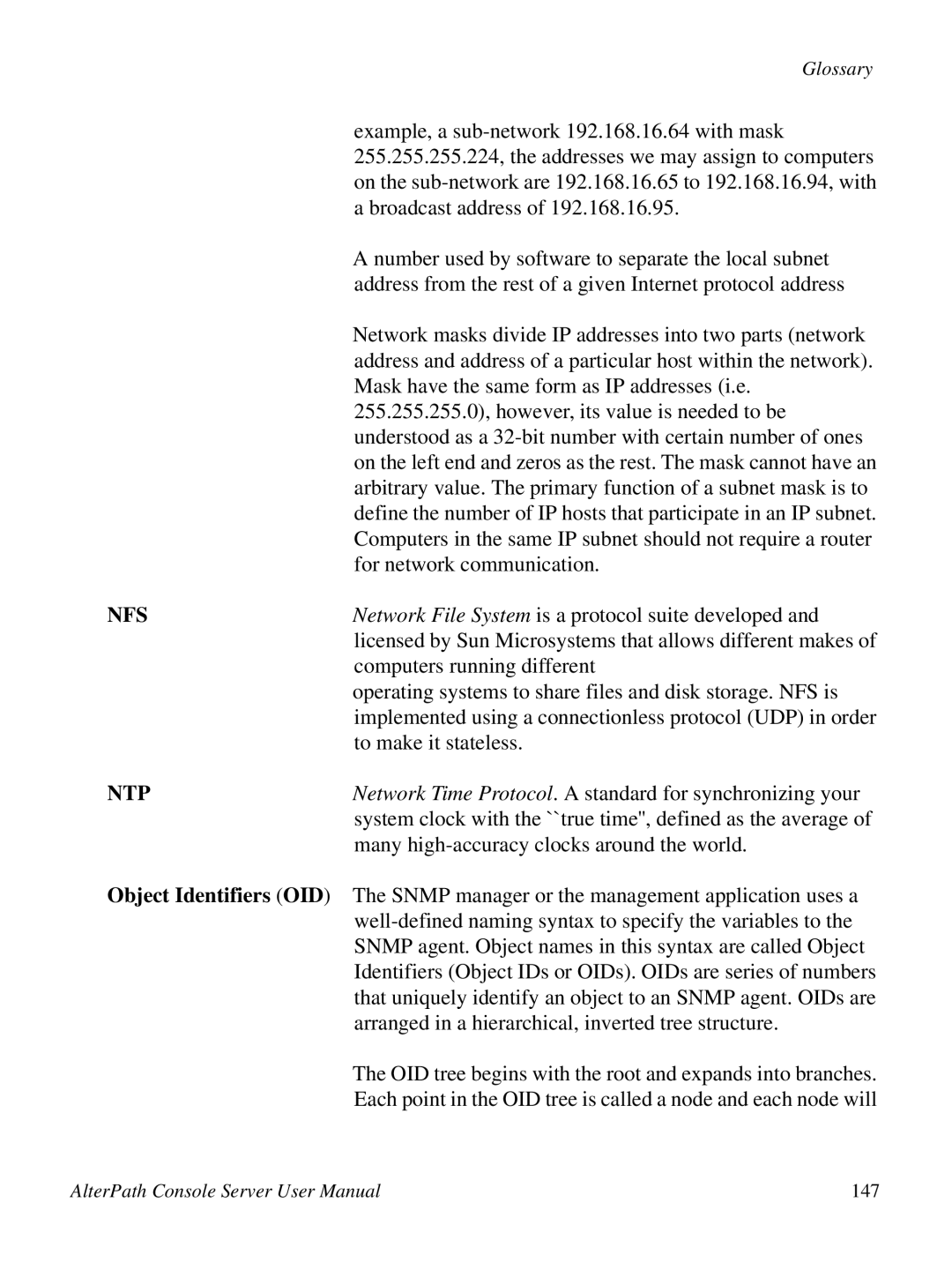| Glossary |
| example, a |
| 255.255.255.224, the addresses we may assign to computers |
| on the |
| a broadcast address of 192.168.16.95. |
| A number used by software to separate the local subnet |
| address from the rest of a given Internet protocol address |
| Network masks divide IP addresses into two parts (network |
| address and address of a particular host within the network). |
| Mask have the same form as IP addresses (i.e. |
| 255.255.255.0), however, its value is needed to be |
| understood as a |
| on the left end and zeros as the rest. The mask cannot have an |
| arbitrary value. The primary function of a subnet mask is to |
| define the number of IP hosts that participate in an IP subnet. |
| Computers in the same IP subnet should not require a router |
| for network communication. |
NFS | Network File System is a protocol suite developed and |
| licensed by Sun Microsystems that allows different makes of |
| computers running different |
| operating systems to share files and disk storage. NFS is |
| implemented using a connectionless protocol (UDP) in order |
| to make it stateless. |
NTP | Network Time Protocol. A standard for synchronizing your |
| system clock with the ``true time'', defined as the average of |
| many |
Object Identifiers (OID) | The SNMP manager or the management application uses a |
| |
| SNMP agent. Object names in this syntax are called Object |
| Identifiers (Object IDs or OIDs). OIDs are series of numbers |
| that uniquely identify an object to an SNMP agent. OIDs are |
| arranged in a hierarchical, inverted tree structure. |
| The OID tree begins with the root and expands into branches. |
| Each point in the OID tree is called a node and each node will |
AlterPath Console Server User Manual | 147 |
